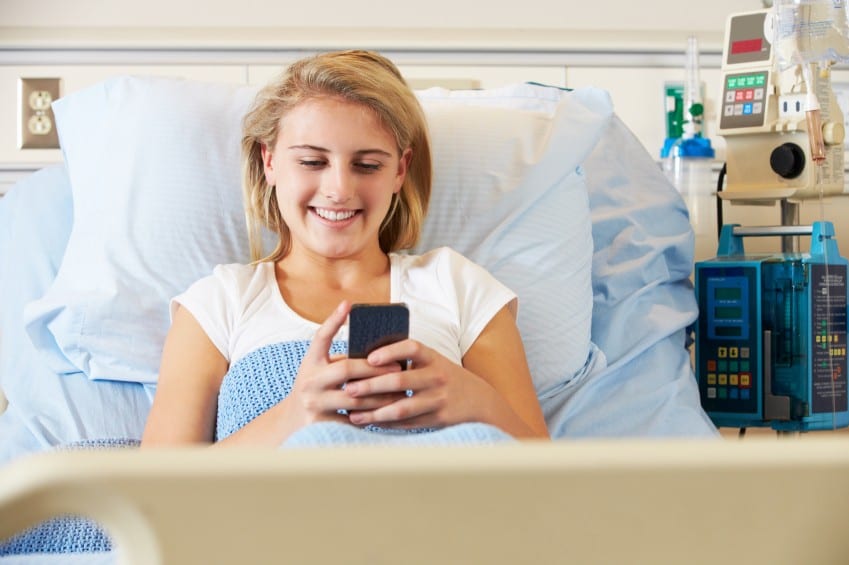BOSTON, MA – Cell phones are now on the list of items previously thought to have no therapeutic benefit, which are now being researched heavily as a potential miracle.
Dr. Lakshmi Singh, an emergency physician and primary author on a recent paper researching wireless-device analgesia, tells of how she first noticed that cellphones might have a huge impact on patient perception of pain.

“I was working a shift once when this horrible case of abdominal pain came through,” she explains. “It was a 17-year-old girl who told triage she had 10/10 pain all over her belly and that she hadn’t been able to eat all day. I ran over to her room only to find her chatting on her cell phone with a friend about a boy in her class that she liked. No moaning or groaning. She looked truly comfortable.”
Dr. Singh decided to revisit the patient after the phone conversation was over, only to find her, yet again, using her phone, this time to access her Twitter account.
“There she was on her phone, looking comfortable, like she was in 0/10 pain. When I know for a fact that it was 10/10 because she told triage.”
Dr. Singh recalls being asked to take a picture of the patient with the patient’s cell phone so she could Snapchat it to her friends.
“I’m telling you, a less-experienced doctor would have sent this girl home right then and there. But I knew better. I asked her to put her phone down, and after standing in the room with her for 10 minutes while she finished tweeting, I demanded the phone be put on the side table. No sooner had it touched the tabletop than all of her pain came flooding back in full force and she was writhing around on the bed in agony.”
Dr. Singh describes a moment of epiphany, when she realized the patient’s cell phone had the power to control pain.
“All of a sudden all of these patient encounter memories came flooding back to me. Patients whose comfort was immediately compromised once their cell phone conversations were over. I asked around and talked to different colleagues who had experienced similar incidences over time, but they had just never quite put the pieces together like I had. All of my colleagues had always assumed patients were being obnoxious or faking their pain when they would answer their phones casually during the interview. It never occurred to them that these patients were self-medicating with what could turn out to be one of the best analgesics of our time: the cell phone.”
Research is still in progress, but Dr. Singh is convinced that this could provide some real answers to pain management in the future. She is already planning a second project investigating the affect of sandwich therapy on suicidality in the ED.
Until then her ER will make sure they have various power cords and even backup cell phones and iPads for patients who come in with pain. c”We’ll just write a prescription for ‘cell phone PRN pain’ and send them home.”







